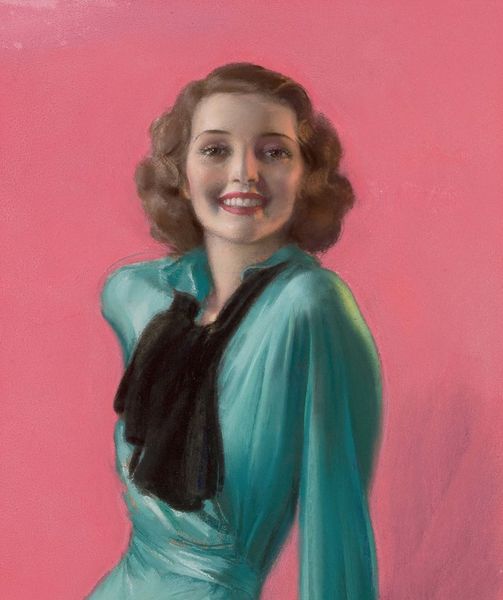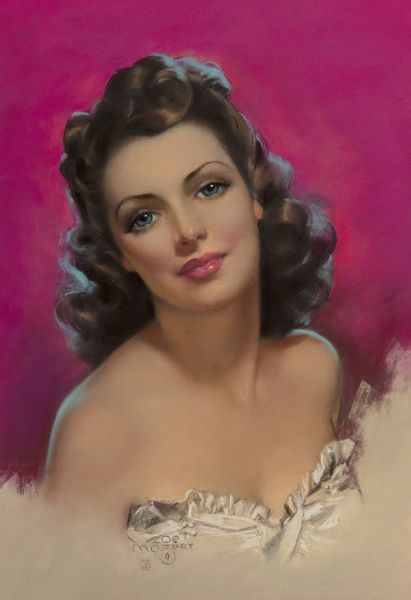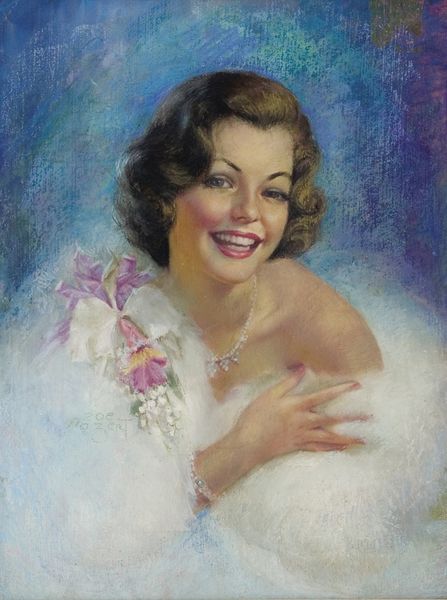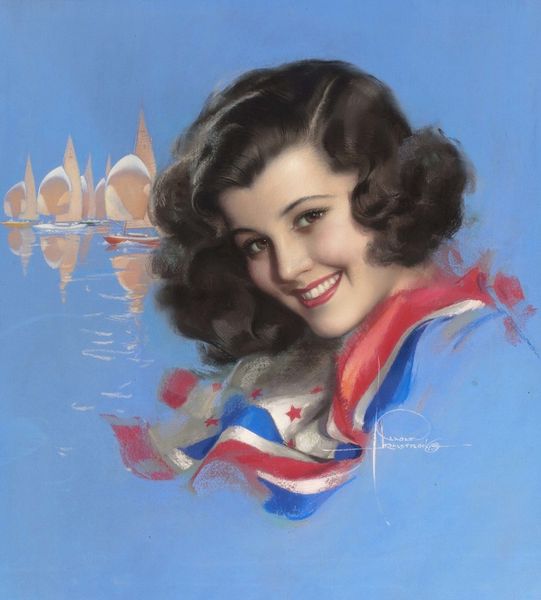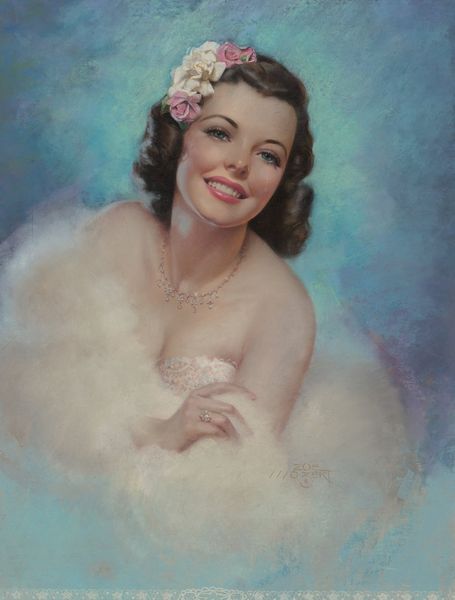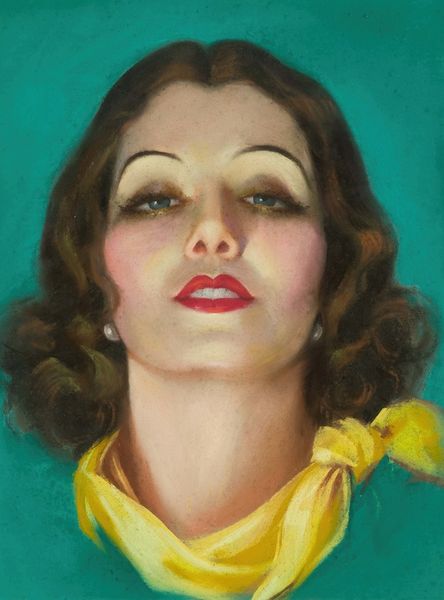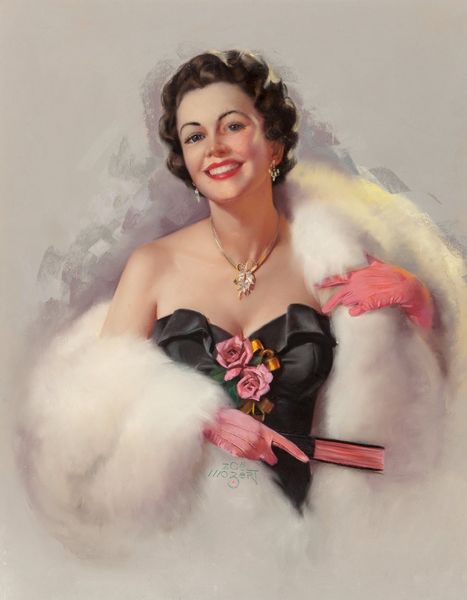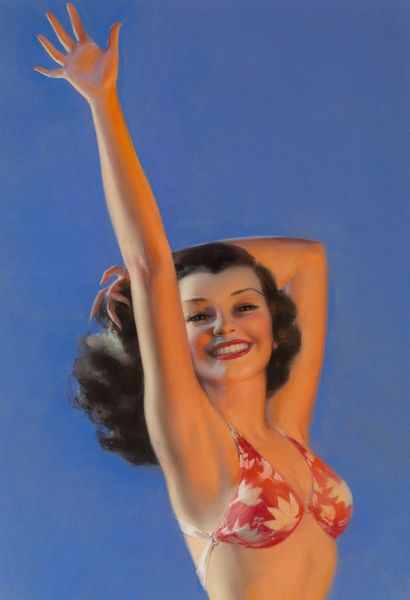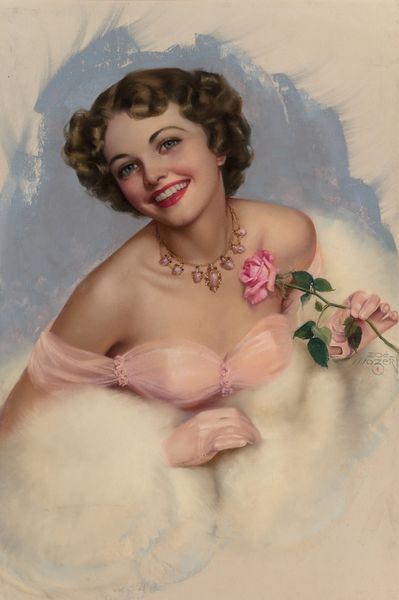
painting, pastel
#
portrait
#
portrait
#
painting
#
figuration
#
pastel
Copyright: Modern Artists: Artvee
Curator: Let’s take a look at Rolf Armstrong's "Portrait of Jewel Flowers," executed in pastel. Editor: My immediate impression is that it evokes a particular era of glamour. It feels…almost manufactured, with that very smooth surface texture typical of pastel. Curator: The choice of medium here is really interesting, particularly when considering its intended audience. Armstrong created images for mass consumption. Pinups like this graced calendars, magazine covers – spaces very accessible to working-class homes. We have to examine the cultural moment here too. What kind of escapism or fantasy does this image provide to, say, a factory worker or a soldier on leave? Editor: Exactly, escapism is a great way to put it! Consider pastel’s quickness and relative cheapness as a material, versus oil paint, say. These portraits became widely distributed commodities; easily reproduced and consumed. Was this artist trying to engage an elite art world, or was this purely a means to get the image out to as many people as possible? And if the aim was reproducibility and mass consumption, what implications does that have for the construction of an ideal, a fantasy? Curator: And who dictates the production of fantasy? There are issues here surrounding the objectification of the female body and power dynamics between artist and model, or even the publishing company and the model. The blue backdrop is clearly artificial; the airbrushed quality reduces her to a product on offer. How can we challenge that framework today? Editor: True, but it could also simply be understood in terms of sheer cost. Armstrong used an inexpensive ground that he then rendered for mass production, so does it actually speak against your points regarding consumerism? To push back would only further reinforce your view of mass consumption, or objectification, that one might initially assume upon the image. In the case of this work I cannot come to a sound opinion as there is little more than the basics. Curator: Ultimately, I’m drawn to this tension between fantasy and commodity and what that tension reveals about early-mid 20th century American identity. Editor: Yes, thinking about how the materiality enabled the broad reach helps solidify this piece's presence in its specific historical and social context.
Comments
No comments
Be the first to comment and join the conversation on the ultimate creative platform.
